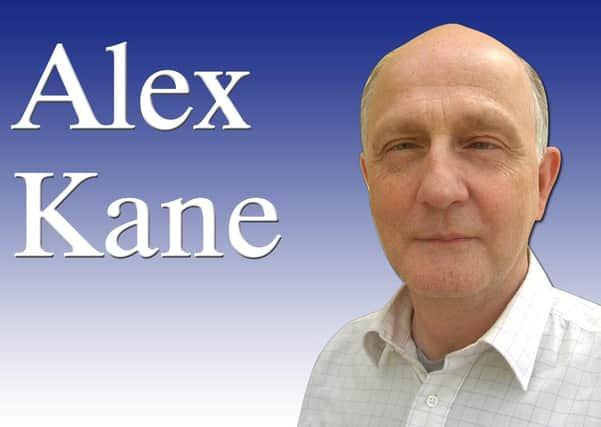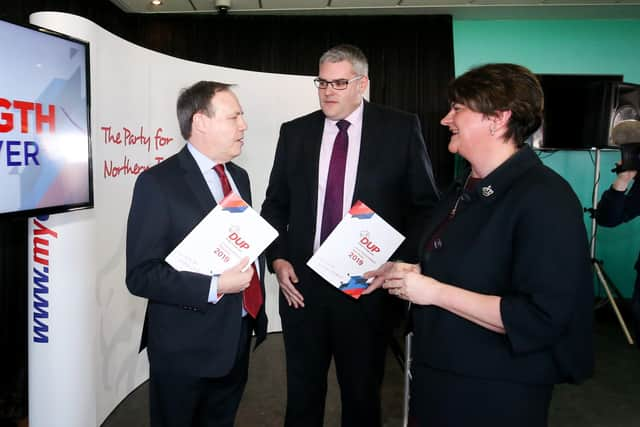Alex Kane: It is a grim reality of Northern Ireland that Arlene Foster needed to talk to loyalists


As someone who writes about local politics I believe I have a responsibility to engage with them.
They chose a path I would never have chosen, but they chose it because they believed they had no other option. I disagree, but that doesn’t matter: what matters is that there are thousands of people still around (some in politics or community work) who once believed that violence was justified.
Advertisement
Hide AdAdvertisement
Hide AdThey, more than the rest of us, understand what can lead a new generation down the same path.


Talking to terrorists is part and parcel of conflict resolution. Indeed, successive British governments were doing it from 1972, when PIRA members were flown to secret talks in London.
Loyalists were also talked to. It’s an unpleasant reality, yet a reality nonetheless: you can’t resolve conflict unless you engage with those who deployed terror.
I know some will argue it wouldn’t be necessary to talk to terrorists if governments had just wiped them out. Yet 25 years after the Troubles began there were thousands of armed activists in loyalist paramilitary groups and the IRA.
Advertisement
Hide AdAdvertisement
Hide AdAll of the evidence from London and Dublin indicated the governments prioritised a resolution the paramilitaries would buy into, rather than total destruction of the organisations and structures.
Which may explain why, 27 years after the 1994 ceasefires and 23 after the 1998 Agreement, paramilitary organisations and structures remain. A
n October 2015 assessment of paramilitary groups concluded: ‘The structures of PIRA remain in existence in a much reduced form. This includes a senior leadership, the Provisional Army Council (PAC)...some departments with specific responsibilities...some regional command structures.’
Crucially, the assessment noted: ‘PIRA members believe the PAC oversees both PIRA and Sinn Fein with an overarching strategy.’
Advertisement
Hide AdAdvertisement
Hide AdOf the UVF and RHC the assessment stated: ‘The structures of the UVF remain in existence and there are some indications of recruitment (and)...larger number of members, including some senior figures are extensively involved in organised crime (but)...it is our firm assessment that the leadership of the UVF is committed to transforming the purpose of the group from violent crime to community focused initiatives.’
The assessment of the UDA and UFF was broadly similar.
Shortly before the assessment was published (maybe they had prior sight) the UVF, UDA and RHC jointly launched the Loyalist Communities Council (LCC), committing to, ‘...play a full and meaningful role in connecting Loyalism to civic society (and) grow confidence within detached communities in Protestant areas. It will provide leadership and quality advice on all matters pertaining to the Loyalist communities throughout Northern Ireland.’
The opening paragraph of their Joint Declaration of Intent acknowledged NI was in ‘...a state of relative peace (because) the constitutional position of NI as an integral part of the UK...has been secured and recognised by republicans as well as unionists.’
Their view today is that the protocol has undermined the constitutional position: a view fuelled by the sound of leading members of the unionist parties and Orange Order megaphoning their own fear of constitutional shift.
Advertisement
Hide AdAdvertisement
Hide AdThe structural relationship between Sinn Fein and the IRA is not the same as the relationship between loyalist paramilitarism and party-political unionism: not least because unionism/loyalism is more diverse.
The PAC’s ‘overarching strategy’ allows it to continually monitor policy, circumstance and response and ensure all are measured by their value in delivering Irish unification.
All wings of the ‘movement’ are represented through the PAC and engagement between them is constant.
Not so with party political unionism and loyalist paramilitaries. Yes, there are links and informal conversations, but nothing like the permanent, formal mechanisms facilitated through an ‘overarching strategy’.
Advertisement
Hide AdAdvertisement
Hide AdThat’s why there is usually so much mixed messaging: and why, even when the messages aren’t mixed, they’re often still confusing. It’s why a spokesman for the LCC was able to do media interviews a couple of weeks ago which — and he would deny it, of course — left party-political unionism with a mighty big headache.
It was inevitable Arlene Foster would meet with the LCC, if only to try and clear the air. It was inevitable, too, the meeting would have to be public knowledge, because, in the eyes of the groups it represents, not being seen to have the ear of the leader of the largest unionist party was never going to be a runner.
Or, putting that more bluntly, being seen not to merit a ‘public’ meeting would suggest the LCC wasn’t relevant: and that’s not the message you want to send when the LCC is trying — which it is — to control younger hotheads and mavericks.
The problem for unionism/loyalism now is that the 2015 assessment of the UVF and UDA highlighted drug dealing, extortion, smuggling, paramilitary-style assaults, robbery and the distribution of counterfeit and contraband goods (although acknowledging the leaderships were committed to transformation). But, six years on, that transformation remains unfinished work.
Advertisement
Hide AdAdvertisement
Hide AdIt wasn’t so much that Foster met the leadership of the LCC — a legal body, it has to be remembered — rather it was that she met them at a time when the organisations they represent still seem knee deep in criminality: with some, it is feared, who may be prepared to consider violence as an option.
At this point an image problem for the LCC is an even bigger image problem for the DUP and for party-political unionism united in opposition to the protocol.
The need to talk with them is a reminder of some grim realities here: yet ignoring grim realities rarely gets you anywhere.
——— ———
A message from the Editor:
Thank you for reading this story on our website. While I have your attention, I also have an important request to make of you.
Advertisement
Hide AdAdvertisement
Hide AdWith the coronavirus lockdown having a major impact on many of our advertisers — and consequently the revenue we receive — we are more reliant than ever on you taking out a digital subscription.
Subscribe to newsletter.co.uk and enjoy unlimited access to the best Northern Ireland and UK news and information online and on our app. With a digital subscription, you can read more than 5 articles, see fewer ads, enjoy faster load times, and get access to exclusive newsletters and content. Visit https://www.newsletter.co.uk/subscriptions now to sign up.
Our journalism costs money and we rely on advertising, print and digital revenues to help to support them. By supporting us, we are able to support you in providing trusted, fact-checked content for this website.
Alistair Bushe
Editor